That's the one 🤣🤣🤣
Looking at the camera elevation and the 110mm zoom, I'd have to assume it was a very small ~~skull~~ rock on Mars ;)
BattleBots on Mars :)
MG seems to like click bait titles for his YT videos. I try to ignore the titles so I can enjoy the content :)
Hopefully we'll see more funding on Earth to research on similar coatings that occur here on Earth
@weariedfae
It is possible, as the rover is heading for Bright Angel (BA) it's the west of the current location. This float rock could be from Bright Angel, so could have been washed down Neretva Vallis by floods etc ~3 billion years ago. BA appears to the white in the HIRISE images, BA is thought to be the oldest rocks the rover will encounter and probably predate the impact that formed the crater, so they could be of volcanic origin... Watch this space
It may not be able to fly, but it is far from fully broken.... It has returned a huge number of images since its last flight, as well as data. They hoped to continue to get data right up until the rover left the crater, but a bad sandstorm could prevent that
From the data that JPL got before the brownout the helicopter was only 1 meter from the ground when it all went wrong. Sadly the brownout meant no data from the IMU was saved in those last seconds before it landed. It must have experienced some pretty harsh vibrations. But it powered up again and has been communicating via the rover to Earth. It has sent back an incredible 2,396 images and a bunch of engineering data since the emergency landing (all those images are post landing) Link to the post landing images:- https://mars.nasa.gov/mars2020/multimedia/raw-images/?begin_sol=1036&end_sol=1136&af=HELI_NAV,HELI_RTE
Since deployment it has sent back 14,551 images (so far) and they will stay in touch with it until the rover drives out of Jezero when radio contact will be lost. The helicopter has no off button. It will wake up every morning that its batteries etc keep working, it will wait until a preset time and it will listen for a radio call from the rover for exactly 50 minutes, if it gets no call, it will go back to sleep, and awake the next day and repeat until its no longer able.
The terrain (deep sand) is too dangerous for the rover to traverse across (it could get stuck and that would be mission over for the rover) Even if it could traverse across, there is no way to pick up the helicopter. Instead the helicopter will spend the rest of its days waking up every morning and listening for a transmission from the rover for a total of 50 minutes, if it gets no signal during those 50 minutes, it will sleep until the next day and repeat until it is no longer able to wake up. Since flight 72 the Helicopter has sent back over 2,300 images.... Link to all those images: https://mars.nasa.gov/mars2020/multimedia/raw-images/?begin_sol=1036&end_sol=1136&af=HELI_NAV,HELI_RTE
They did plan some blade rotations, then this image came down. I hope they do more imaging. there should be a lot more images on the helicopter, lets see what is made public in the days ahead
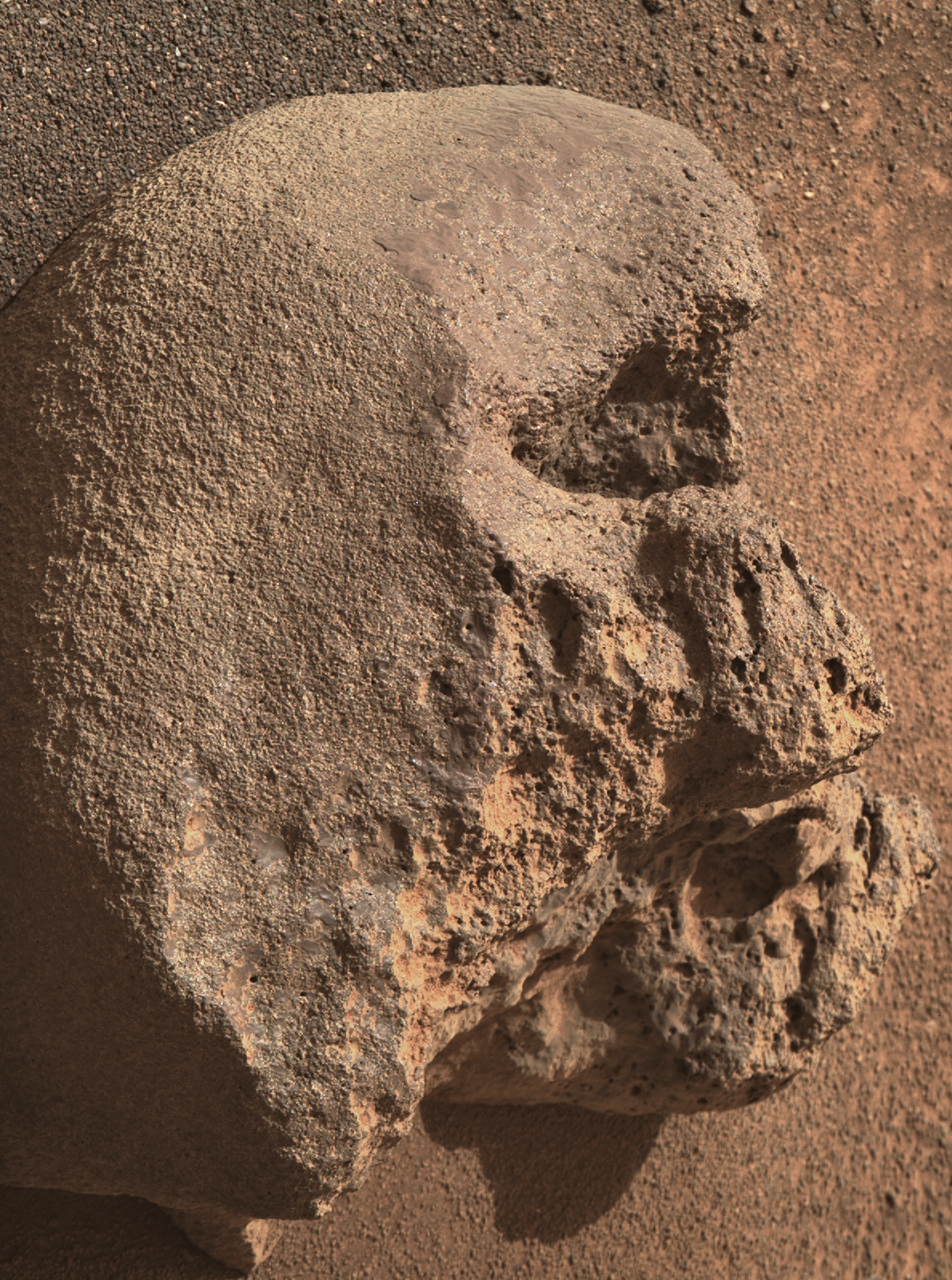
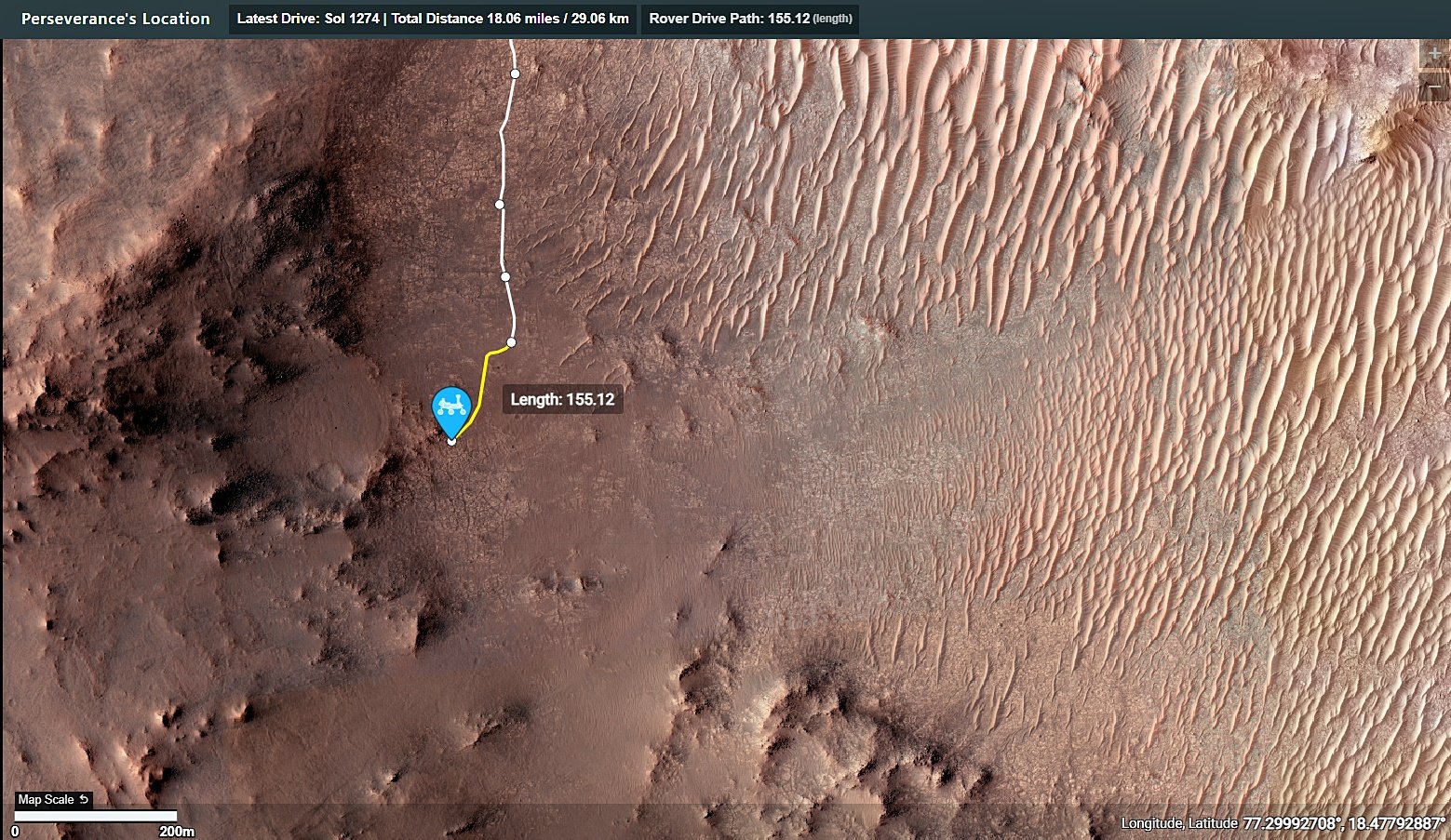
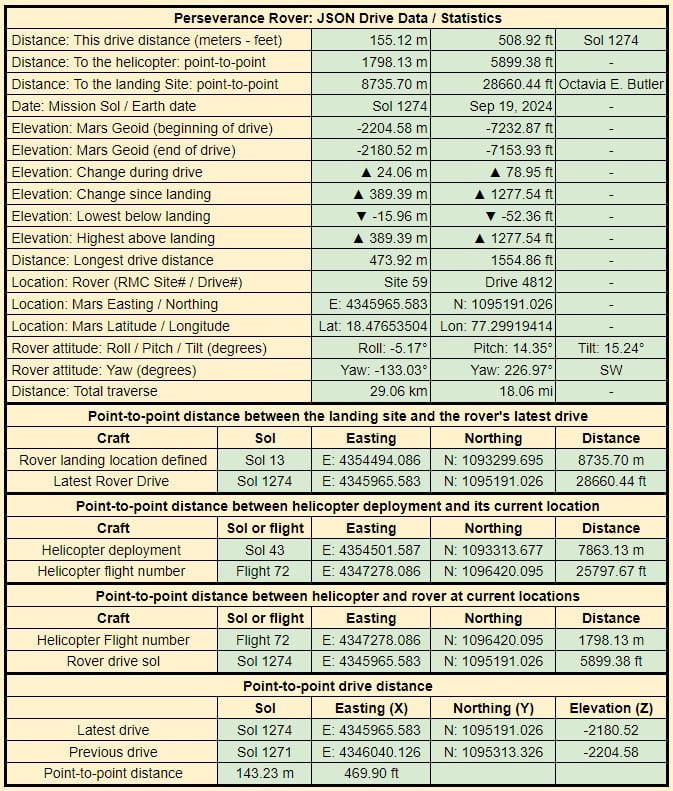


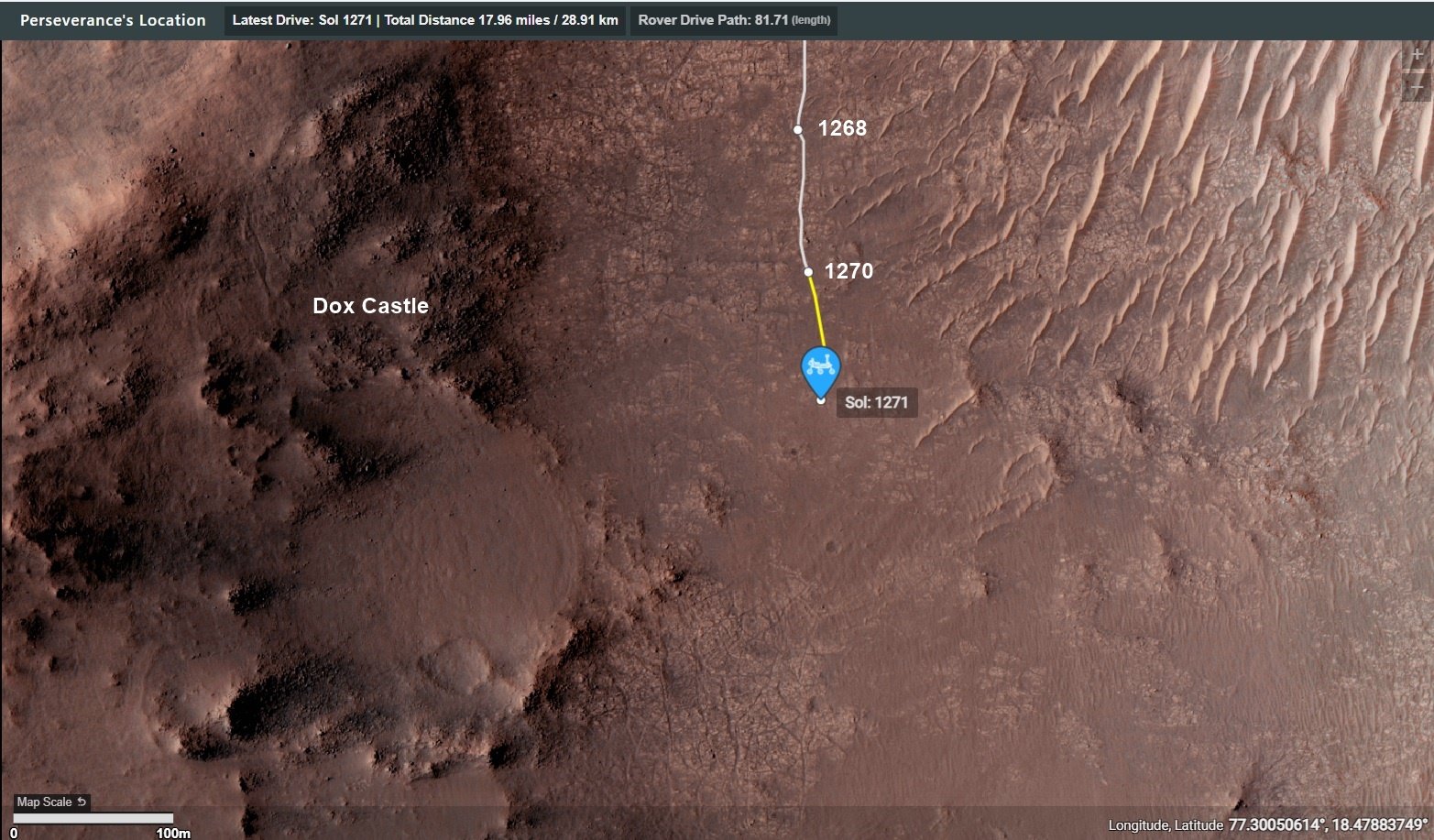
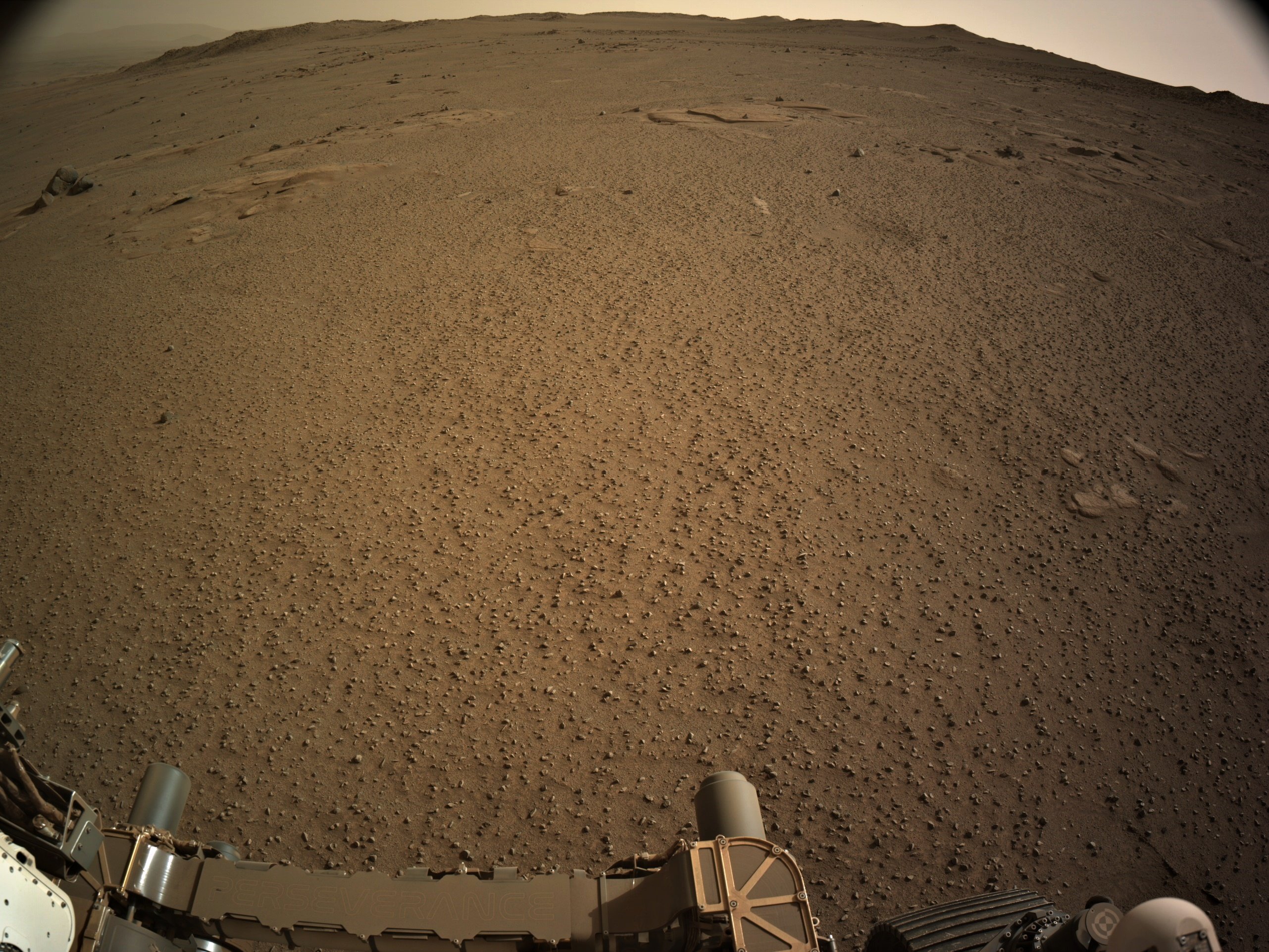
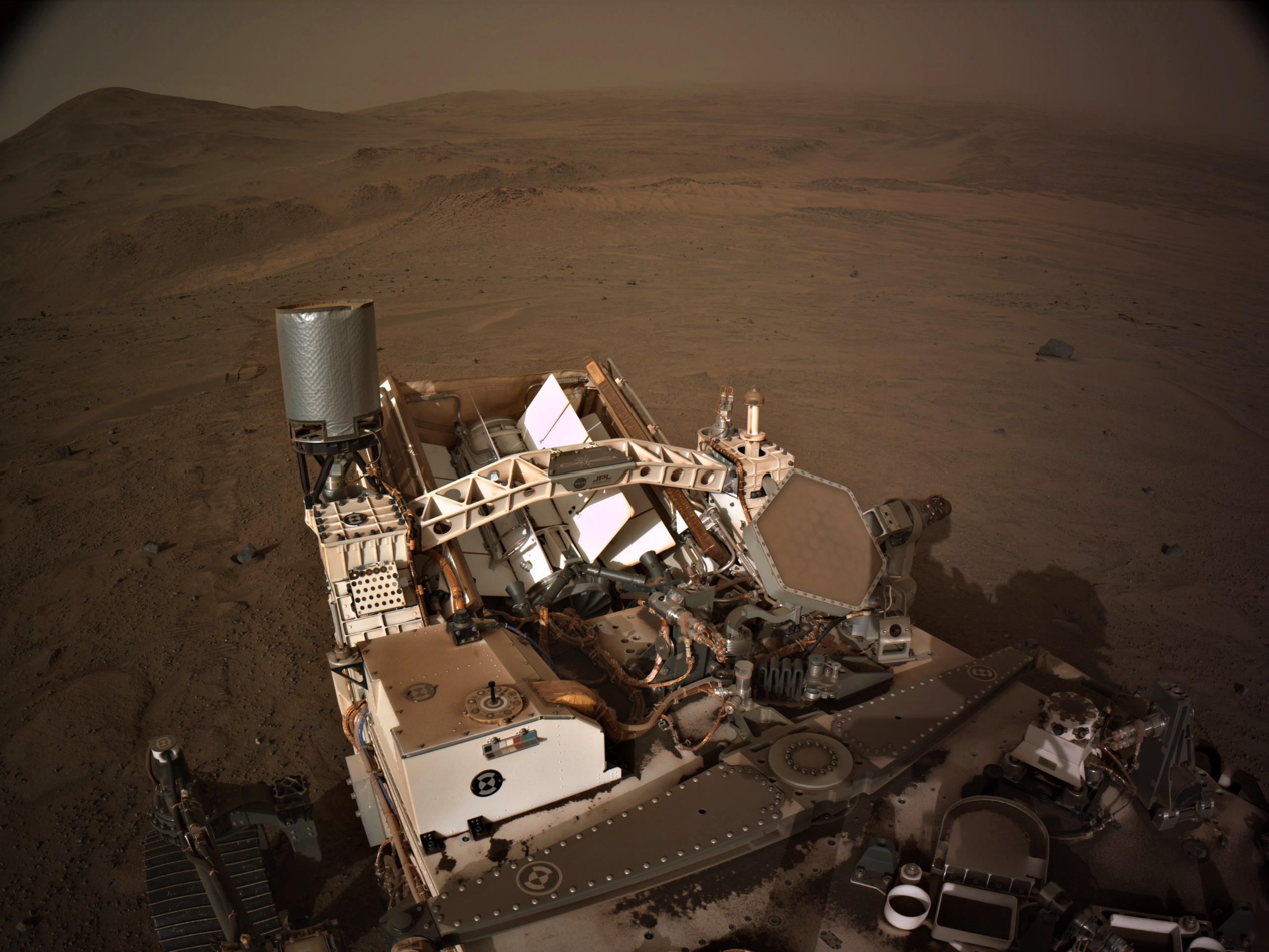
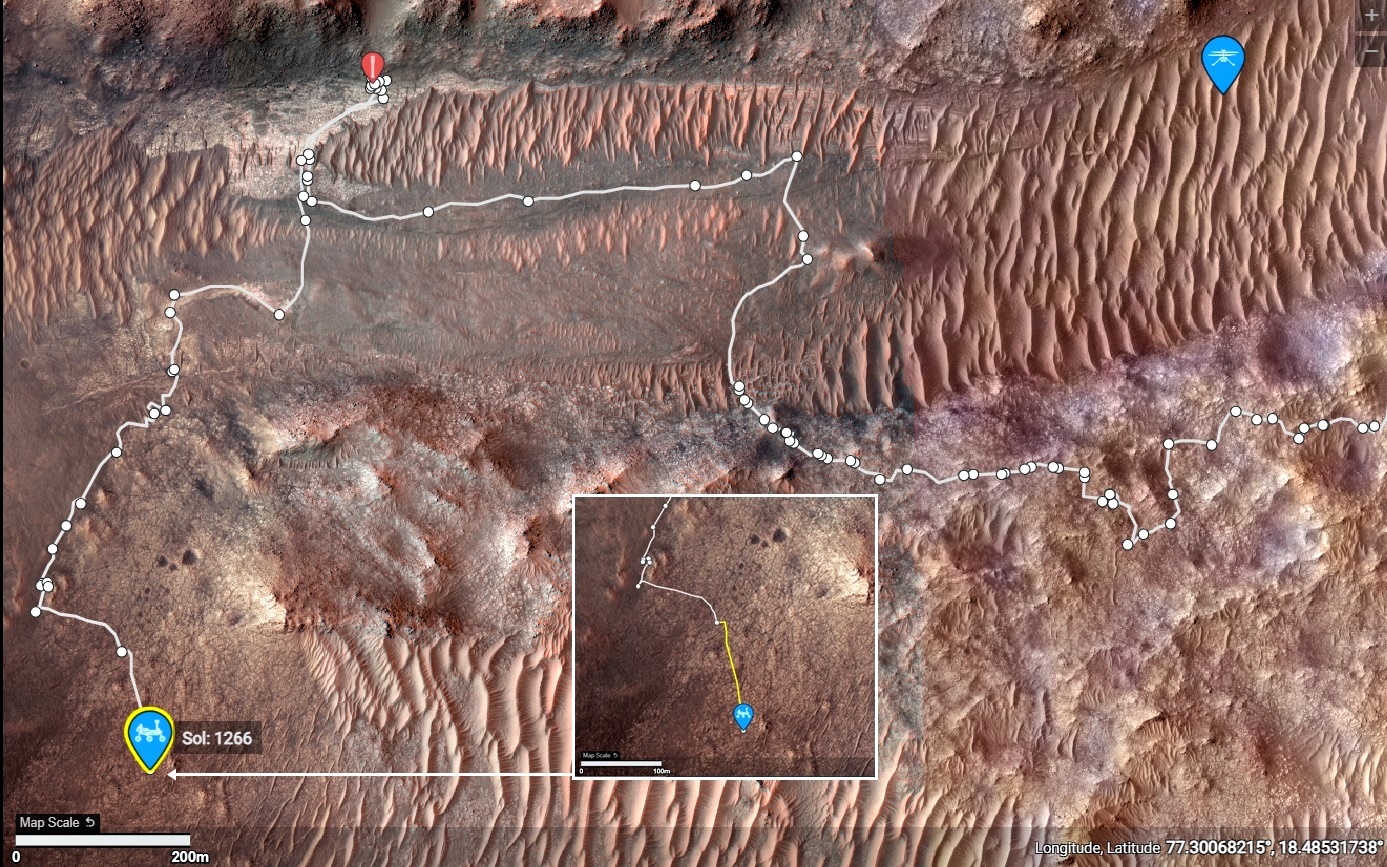

It was, the climb on 1274 currently holds second place on the leader board, the highest elevation climb in a single drive is currently 26.4 meters (sol 1268), but that was over a marginally longer traverse, so probably a very similar average angle. I agree that the team have appeared to pause the drives whenever they spot an enticing target of opportunity :)
Pity we don't get frequent and detailed mission updates (Like we get on MSL). The PDS mission manager reports are amazing, but they are only made public at least 6 months after the 'event'